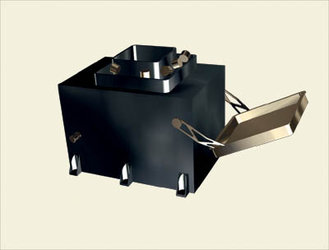Rosetta's instruments
ESA's cometary explorer carries 21 scientific instruments in total. Their job is to draw out the secrets of the comet’s chemical and physical composition and reveal its magnetic and electrical properties.
This will be our first chance to be present, at first hand, as a comet comes to life. The Rosetta orbiter's scientific payload includes 11 experiments, in addition to the lander, will study the comet nucleus more precisely than has ever been possible before, as earlier probes simply flew past their targets.
Scientific consortia from institutes across Europe and the United States have provided these state-of-the-art instruments. All of them are located on the side of the spacecraft that will permanently face the comet during the main scientific phase of the mission.
The scientific instruments range from a camera which will take wide and narrow angle photos of the comet nucleus, through several spectrometers, to dust analysers and radio signal experiments
See the links to the right to see what each instrument does.

The lander consists of a baseplate and a science platform for nine instruments.
Some of the instruments and subsystems are beneath a hood that is covered with solar cells. The lander carries nine experiments, with a total mass of about 21 kilograms.
The lander has ten scientific instruments, including six mini cameras for panoramic views of the comet's surface, two gas analysers, a magnetometer and plasma monitor and a drill which collects samples from the surface to be inspected by automatic on-board microscopes.
Click on the links to the right to see what each instrument does.















 Germany
Germany
 Austria
Austria
 Belgium
Belgium
 Denmark
Denmark
 Spain
Spain
 Estonia
Estonia
 Finland
Finland
 France
France
 Greece
Greece
 Hungary
Hungary
 Ireland
Ireland
 Italy
Italy
 Luxembourg
Luxembourg
 Norway
Norway
 The Netherlands
The Netherlands
 Poland
Poland
 Portugal
Portugal
 Czechia
Czechia
 Romania
Romania
 United Kingdom
United Kingdom
 Slovenia
Slovenia
 Sweden
Sweden
 Switzerland
Switzerland






































